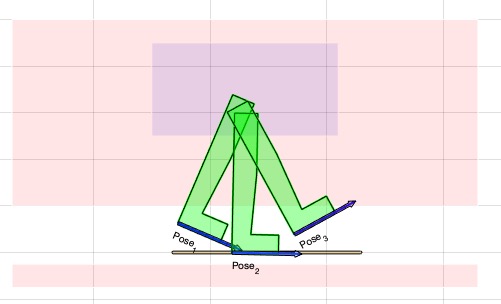jarvismemory
by Tim C. Lueth, SG-Lib Toolbox: SolidGeometry 5.6 - User interface
Introduced first in SolidGeometry 5.1, Creation date: 2022-01-25, Last change: 2025-09-15
sets or gets a pose from jarvis / fourbardesignbysiri
See Also: jarvis
, fourbardesignbysiri
Example Illustration

Syntax
PS=jarvismemory([PSN])
Input Parameter
PSN: | | New Pose to store in global variable fourbardesignbysirimem |
Output Parameter
PS: | | Pose stored currently in global variable fourbardesignbysirimem |
Examples
PS=PosesampleWalk;
jarvismemory(PS);
jarvis
Copyright 2022-2025 Tim C. Lueth. All rights reserved. The code is the property of Tim C. Lueth and may not be redistributed or modified without explicit written permission. This software may be used free of charge for academic research and teaching purposes only. Commercial use, redistribution, modification, or reverse engineering is strictly prohibited. Access to source code is restricted and granted only under specific agreements. For licensing inquiries or commercial use, please contact: Tim C. Lueth
Algorithm (Workflow)
This function, jarvismemory, is designed to manage a global variable that stores a pose structure. It is part of the SolidGeometry library and is used to either set or retrieve a pose from a global memory variable named fourbardesignbysirimem.
Input Parameters
- PSN: This is an optional input parameter representing a new pose structure that the user wants to store in the global variable
fourbardesignbysirimem.
Output Results
- PS: This is the pose structure currently stored in the global variable
fourbardesignbysirimem. If a new pose is provided as input, the function returns the old pose before updating the memory.
Algorithm Steps
- The function begins by extracting the first input parameter using
getfuncparams. If no input is provided, PSN defaults to an empty string.
- The global variable
fourbardesignbysirimem is accessed to retrieve the current pose, which is stored in the output variable PS.
- If
PSN is not empty, indicating that a new pose is provided:
- A debug message is printed to indicate that the memory is being overwritten.
- The global variable
fourbardesignbysirimem is updated with the new pose PSN.
- If the function is called without an output argument, it automatically calls the
jarvis function.
Example Usage
To use the function, a user might first create a pose using PosesampleWalk, then store it using jarvismemory(PS). The jarvis function can then be called to perform further operations.
Algorithm explaination created using ChatGPT on 2025-08-18 23:30. (Please note: No guarantee for the correctness of this explanation)
Last html export of this page out of FM database by TL: 2025-09-21